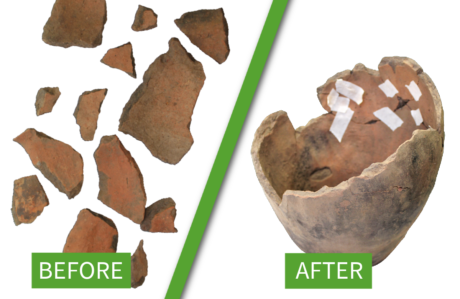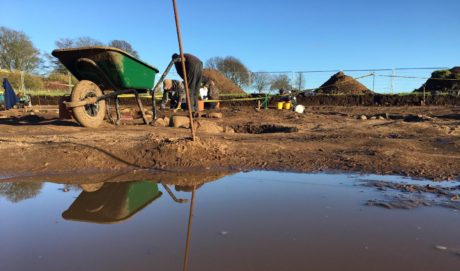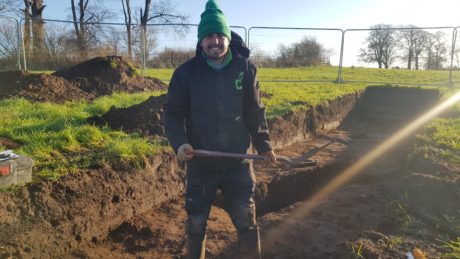
This week our Roman dig has taken a turn as we’ve had to say goodbye to our Venturers, but that hasn’t stopped some amazing archaeology from being found, and some exciting new ideas from forming…
It’s the third week of our excavation for Discover Brightwater and we’re starting to understand a bit more about the massive Roman settlement buried under East Park, Sedgefield.
With a new lockdown coming into place to help prevent the spread of COVID-19, we’ve had to make some changes to our plan of action. On Wednesday, we sent our Venturers off for the last time and the dig moved into a staff-only operation.
We’re going to miss them, but they certainly made the most of their last week, and it shows.
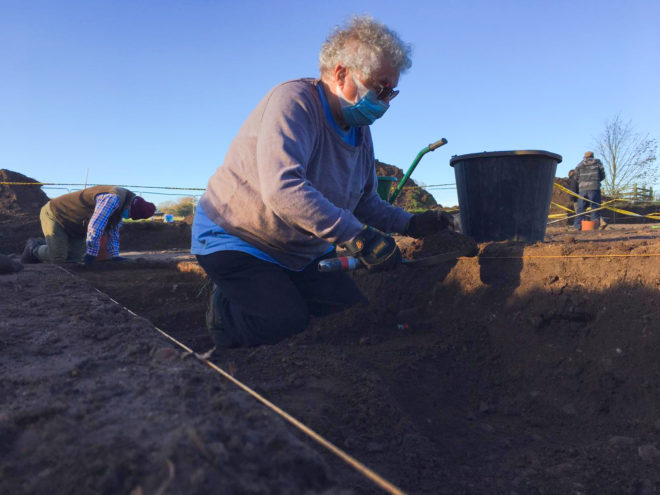
We lifted our beautiful Roman pot:
Last week we found a mostly complete Roman vessel placed upright inside one of our features. Now that pot has been carefully lifted from site and is ready to be micro-excavated. On that topic, keep an eye out, because we have a super exciting event in the works!
But just when we thought we’d already hit the jackpot, we found another one nearby. This vessel looks to be just as complete – if a bit smaller. We hope we’ll be excavating it in the upcoming week.
We found a beautiful Roman bead:
A ditch in the south west corner of the trench revealed a small find that’s as pretty as it is mysterious. If you’ve been following our social media, you’ll have seen the lovely possible bead our Venturer Bill found.
We’re not quite sure yet what it could be made from, it looks similar to jet, but it’s quite lightweight. So far we’re juggling around a few ideas, from jet itself to maybe polished shale. There’s also the question of what it is. We loved hearing everyone’s ideas on social media! Looking at it closer in post-ex will help us to identify it conclusively.
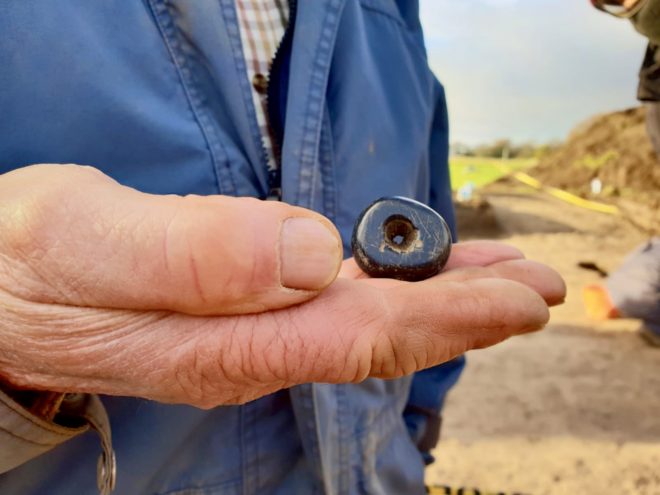
We reunited pieces of a broken Roman quern-stone:
While extending a section investigating one of the features in Nat’s area of the trench, Erin uncovered what looked like a piece of worked stone. We could tell this because of the neat circular cut in one end of the artefact. This was exciting in itself, but we didn’t expect what came next.
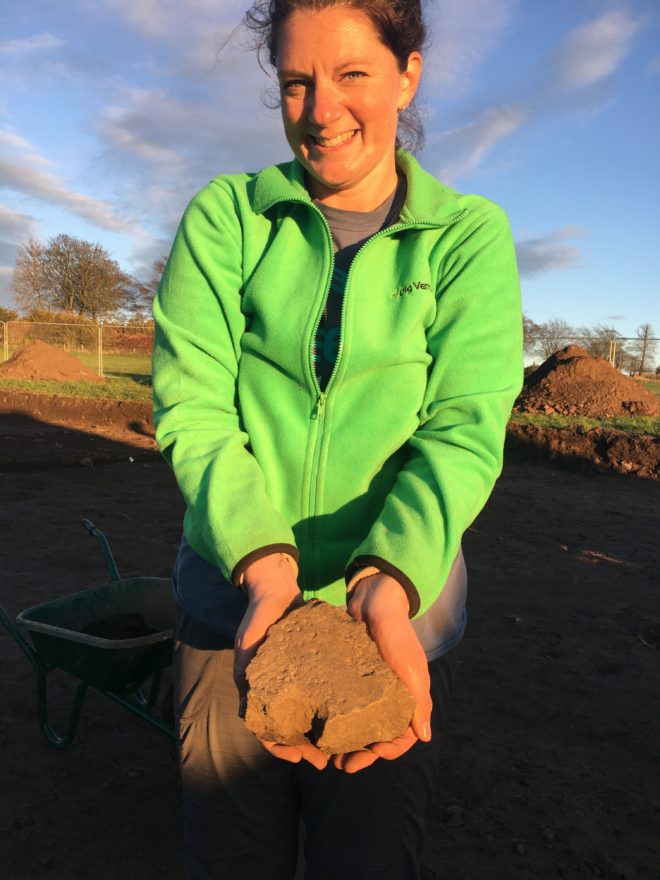
After seeing the artefact, Nat noticed there was something familiar about it. As it turned out, we had two other pieces of worked stone with similar circular cuts, found earlier in the dig. When we placed them together, we could clearly see that these three pieces were all part of one single quern-stone, which would have been used for grinding.
What makes this even better, is that the two other fragments of the quern-stone came from a feature a few meters away. Things like this make us archaeologists really happy, because it helps us build the possible story of an artefact.
In this case, what might have happened is that the quern-stone broke after a certain period of use. The people who lived here possibly then took these broken pieces and used them as packing when constructing postholes.
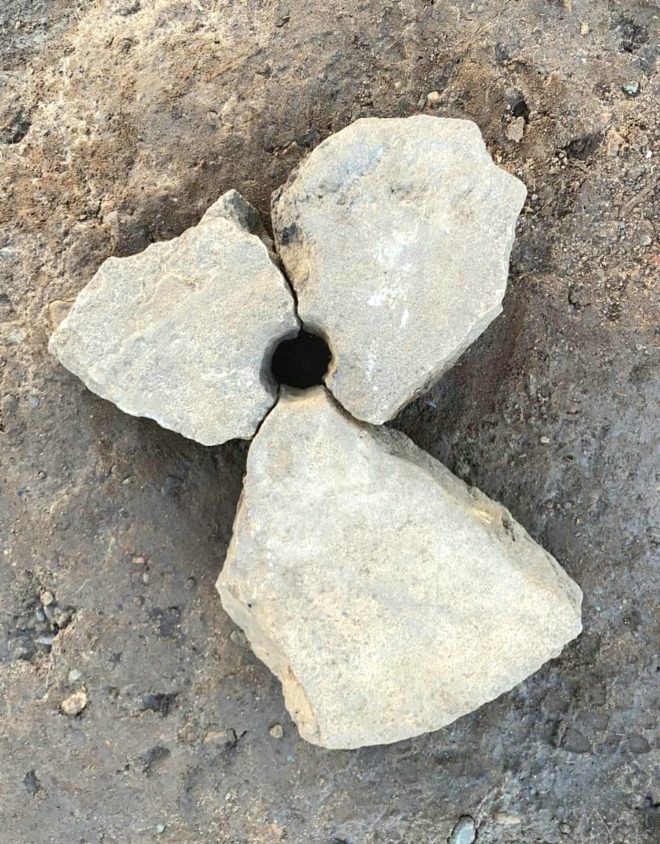
What were our Roman postholes for?
We mentioned these postholes in last week’s site diary, but now we think we might have a bit more of an idea of what they could be part of. There definitely seems to be a structure here, and as we’ve continued digging, the types of finds we’ve found have given us a few ideas about the nature of the structure.
So far, we’ve found barely any domestic waste. The large amount of pottery we’ve found is varied, and only a small amount of it seems to be domestic in nature. Not only that, but we haven’t found much animal bone at all. Granted, this could be due to the poor soil preservation, but could it have another meaning?
Domestic Roman structures often produce lots of animal bone in archaeology. Combine this, our pottery clue and the fact we’re so close to a trackway and it suggests one possible thing: we might have a Roman shop! We can’t be confident yet, but that would be a really awesome find.
This just goes to show how our understanding of one site can shift so much over time.
As always, we’d love to hear what you think! Drop a comment below or get in touch with your ideas.
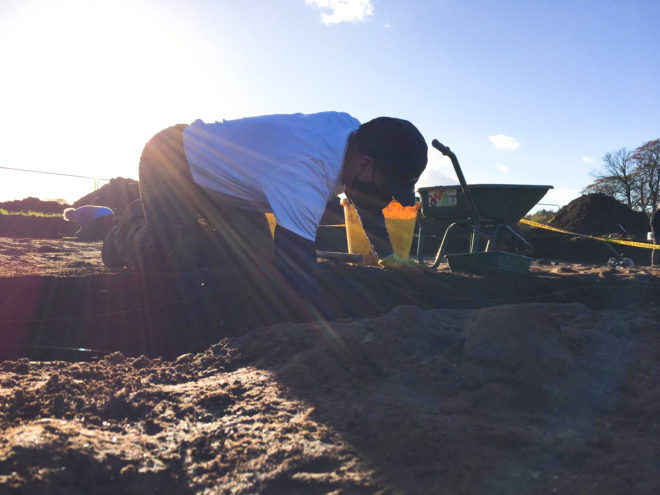
About Discover Brightwater
This dig is part of Discover Brightwater – a huge project which aims to restore, reveal and celebrate life around the River Skerne.
It is supported by the National Lottery Heritage Fund, and the events which focus on the historic environment are the initiative of Durham County Council’s Archaeology Section. As part of the project, DigVentures is organising public participation in events at five different archaeological sites, including East Park, Legs Cross Bolam, and Bishop Middleham. Find out more.
